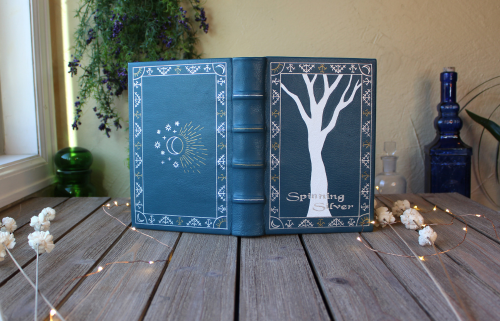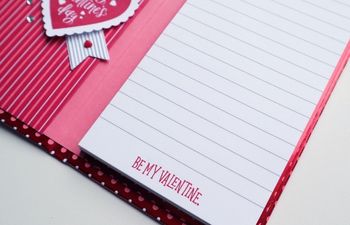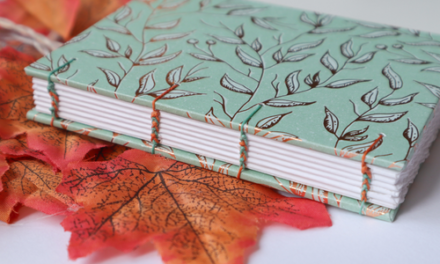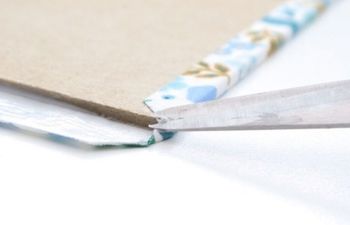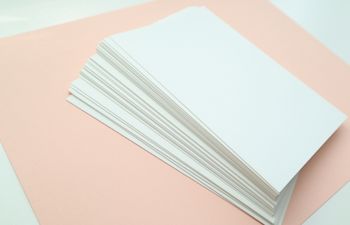What is a fine binding? I get this question a lot from my fellow bookbinders. It’s a term you’ll see floating around Instagram, blogs and other sources of book making inspiration. On the surface, it might seem obvious fine bindings are beautifully made books. But what does it truly mean for a book to be considered a “fine binding”? Is it craftsmanship, artistic design or something entirely different? What are the rules? These are all great questions and I’ll work to answer each of them in this post.
What is a fine binding?
The term “fine binding” is less of a refined definition and more of a spectrum. For example, some people believe fine bindings are those made during a specific time period or with a certain method. Others feel there must be a combination of elements present in (such as full leather + gilt edges) or a certain amount of craftsmanship combined with artistic design. If you ask this question of five different bookbinders, I’m sure you’ll get five different answers.
For me personally, fine bindings are the bookbinder’s version of fine art. As a utilitarian object, books were rarely (if ever) thought of as art, much less fine art. You wouldn’t see a book in a museum because of it’s beauty; instead, the book would appear alongside other historical references to the time. On it’s own, a well made book doesn’t seem to qualify as art. Thankfully, as time moves forward, so does the consideration of books as more than just a shelf product.
Standard vs. fine binding differences
While working with amazing bookbinders at the American Academy of Bookbinding and around the world, I’ve come to understand the Fine Binding as having a few key differences from standard handmade books:
- high level of craftsmanship and technical skill
- often covered in full leather or leather doublures (french term for leather on the outside and inside covers of the book)
- elaborate design elements outside and inside the book
- will very often include leather hinges or raised bands
- finishing elements such as tooling, stamping, embossing, etc.
- there is content (these are not usually journals or art books)
As you can imagine, creating a book like this requires a lot more time, technical skill, craftsmanship and creativity to pull off. Most of the materials used are also handmade (by the binder themselves or a fellow artist) and therefore more expensive to source. The equipment required to finish the book can also be hard to come by. Some bookbinders will even collaborate with other binders who have varying talents (such as tooling or edge gilding) to achieve the final vision.
Examples of beautiful find bindings
Holly D’Oench, Black Oak Bindery
These fine bindings were created by Holly D’Oench of Black Oak Bindery. I love how her books embrace the world of fantasy. Notice the raised bands, edge gilding and tooling (among other stunning techniques) used on her finely made books below.
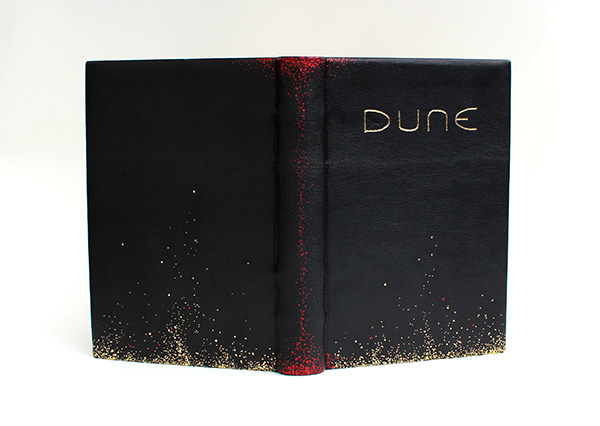
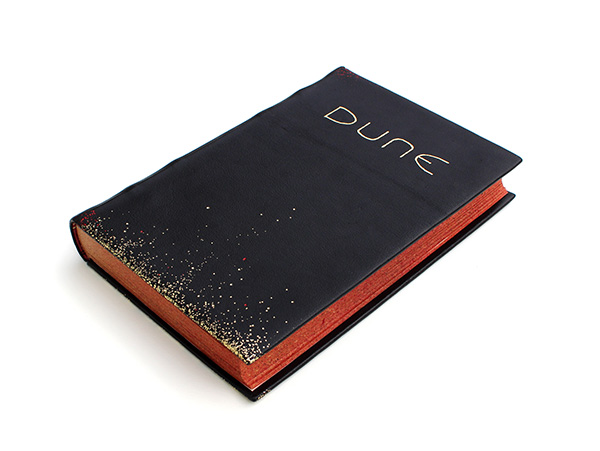
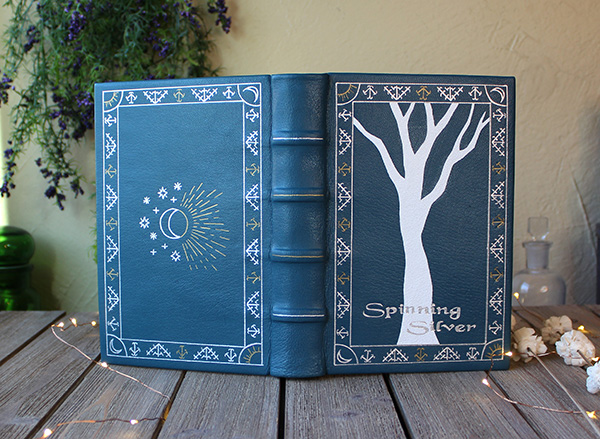
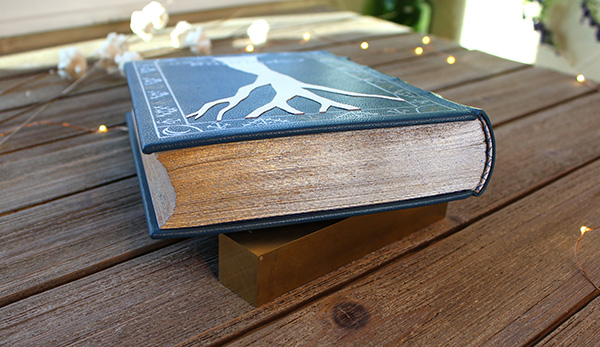
Mel Antuna Hewitt, Libro Buch
Our next set of bindings were created by Mel Antuna Hewitt of Libro Buch. Mel has an incredible eye for art and print. Her design combinations often feature unique elements, striking contrast and bright colors. I love how each book is an experience and she is not afraid of color. Notice the leather onlays, leather hinge joints and metalwork detail (among other awesome techniques) in her fine bindings below.
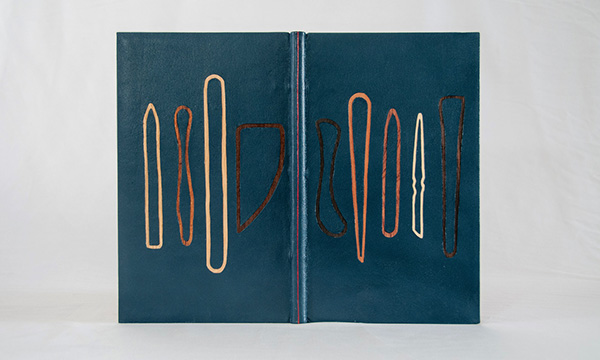
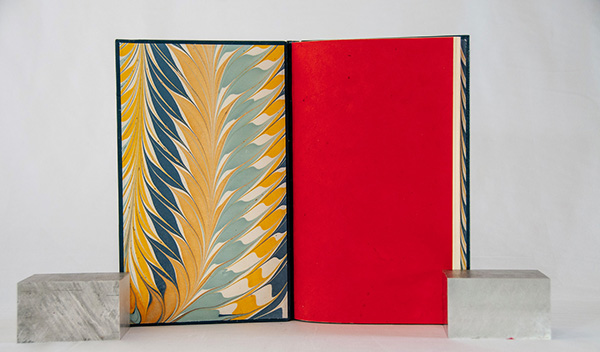
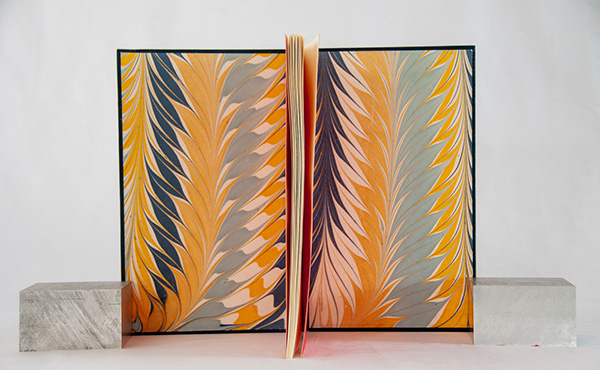
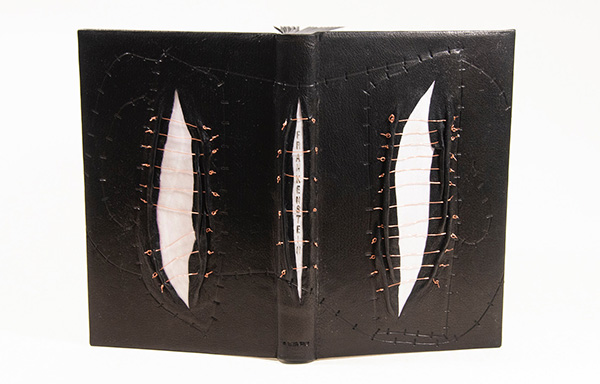
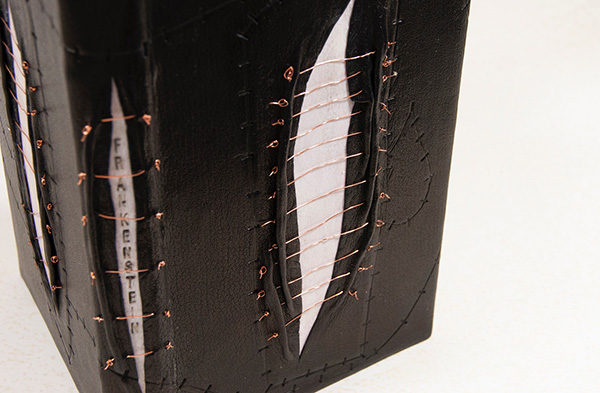
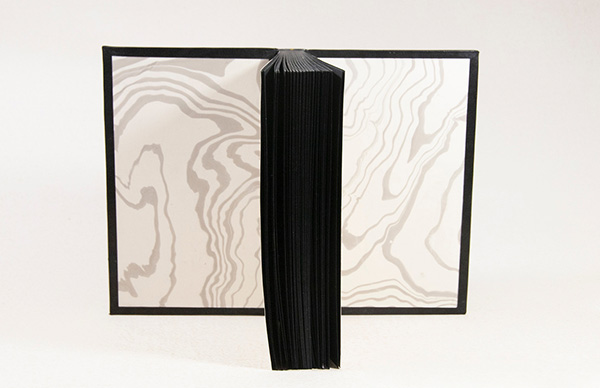
Peer review & valuable feedback
As books become more acceptable as a fine art form, it’s only natural that competitions and exhibitions would crop up. Bookbinding exists within the world of academia, so it’s a great way for us to create work and receive review by a panel of worthy judges. To allow for this, fine binding competitions and exhibitions have cropped up. These events will include awards while others are purely intended as a way for a binder to showcase their skills and individual pieces over time.
Many exhibitions have very specific requirements. These requirements are usually different depending on the organization or publisher, so you’ll have to pay attention to what they’re looking for in their version of a “fine binding.” After the time period for submission ends, the books are judged and photographed. Books that make the cut are usually included in a printed catalog. If your book makes the cut, you’ll get to see it published alongside other amazing works! It’s quite the honor, especially if the competition exists in a special part of your world (original works, fan fiction bindings, etc).
Participating in fine binding competitions and exhibitions
Apart from the marketing angle of getting your work noticed, there’s another benefit to fine binding competitions: a book in sheets!
Due to the expense required to print books in sheet form and in limited numbers, they can be really hard to come by (both in cost and ability to source), so most competitions or exhibitions will print a text to be bound as part of the entry. In a way, this can even the playing field between book artists by taking out the hurdle of finding your own text. On the other hand, some book artists would rather bind their own texts (such as fan fiction or poetry), so there are competitions that allow for this as well.
Of course, there are entry fees. These fees help cover the costs of printing, assembling, publishing and running the exhibition. It also asks you, as a book maker, to judge your own work. Is your work at a point where the entry fee makes sense? This is a personal question only you can answer, but I offer this tip: go for it, even if you don’t think you’re ready yet. There is a remarkable sense of accomplishment in simply participating in a well-organized exhibition. Every book you make is another opportunity to learn and improve, so take the chance!
There is a lot more to be said about bookbinding competitions, but I’ll go into that another time and in a different post. I’ll be participating in my first competition in early 2025, so I’d rather wait until I’ve had the experience and can write about it truthfully. Stay tuned!
Are fine binders better than other bookbinders?
Hell no.
Every bookbinder has their own talents in craftsmanship and design. There is no reason for anyone to consider themselves a “better” book maker than someone else. Bookbinding is still in a place where fine artists won’t (and often don’t) consider books to be works of art. They’re simply seen as a utilitarian item because books have a sort of “defined” structure and fine art, apparently, does not.
If I sounded a little sarcastic in that last sentence, it’s because I intended to. In my years making books, I have witnessed this kind of dismissive behavior in person and online. It’s sad, because trade art is just as beautiful and meaningful to the consumer as fine art. In the world of books, there are avid collectors and those who commission beautiful books by specific binders. They’re obviously looking for a type of art, not just a book to be read or stored on a shelf.
As with anything that goes against popular belief, it will take time for books to be accepted as fine art. This is why the fine binding is so important to bookbinders, even if we don’t want to participate in the creation of fine books ourselves. At the end of the day, we are all here to make something beautiful. Let’s support each other in that goal!
More bookbinding goodness
✨ What tools do I need to get started bookbinding?
- Bookbinding Tools & Supplies Quick Start Guide – learn all about book making tools, which to buy first & where to go online
- Pick up my popular Complete Starter Bookbinding Tools Kit – all the bookbinding essentials in one spot
🌟 Looking for a simple way to start making books?
Try a Complete Book Materials Kit. Each one has everything you need (+ tutorials & videos) to make a beautiful book without all the fuss.
Thank you for taking me along on your book making journey!
Misty
